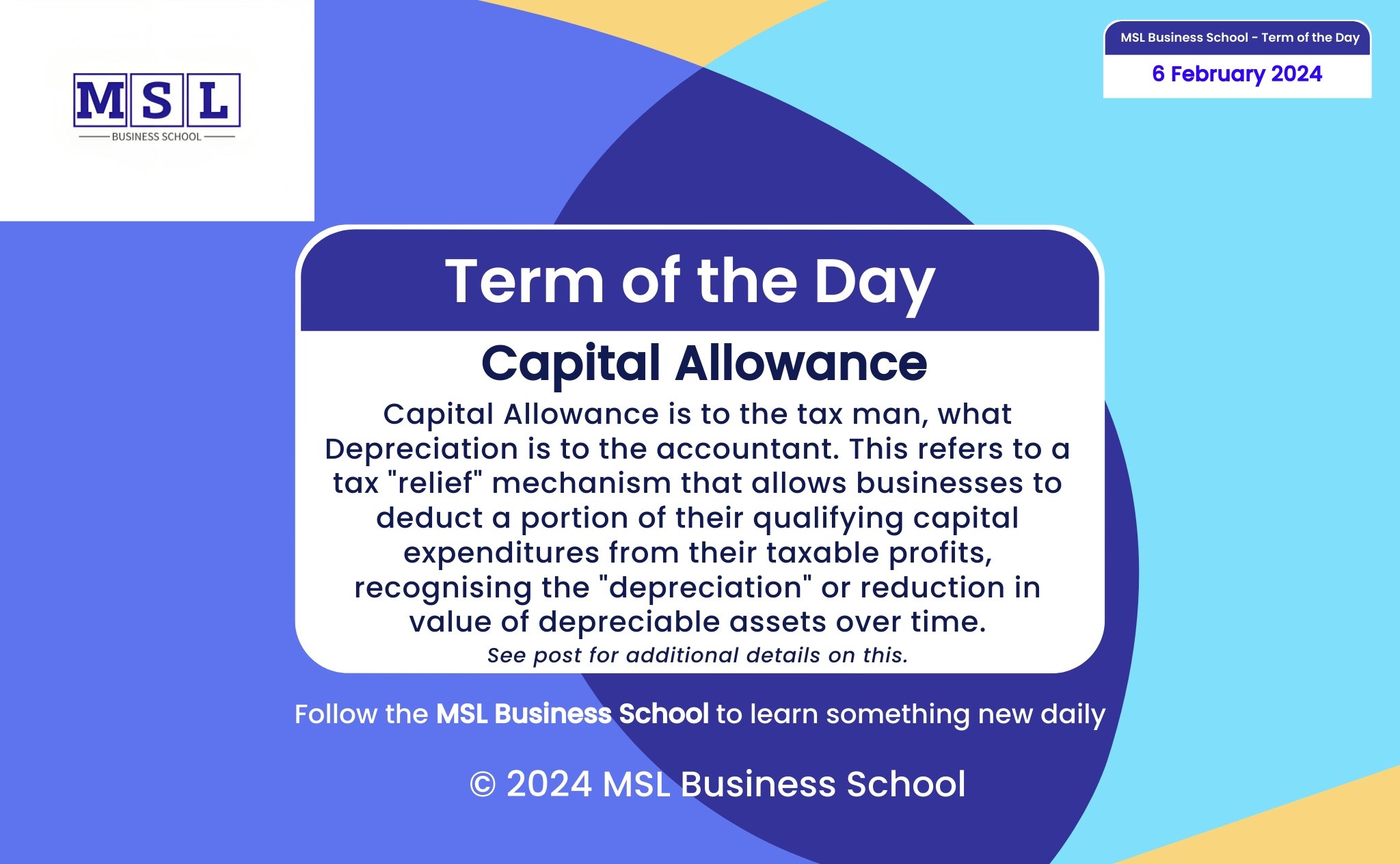Capital Allowance
Term of the Day - 6 February 2024
Today’s Term is “Capital Allowance”.
In the context of tax, "Capital Allowance" refers to a tax “relief” mechanism that allows businesses to deduct a portion of their qualifying capital expenditures from their taxable profits, recognising the depreciation or reduction in value of depreciable assets over time. This serves as an incentive for businesses to invest in and maintain productive assets, fostering economic growth.
When a business acquires a depreciable asset, such as machinery, equipment, or commercial property, it incurs a capital expenditure. Capital allowances enable the business to offset this cost against its taxable profits over the useful life of the asset. Tax laws in many jurisdictions grant companies capital allowance in lieu of accounting depreciation.
The specific rates and rules governing capital allowances vary by jurisdiction and the nature of the asset. Different methods, such as the straight-line method or reducing balance method, may be employed for calculating allowances.
For example, in Ghana, the below are the applicable capital allowance rates:
Class 1 Assets - 40% (Reducing Balance Basis)
Class 2 Assets - 30% (Reducing Balance Basis)
Class 3 Assets - 20% (Reducing Balance Basis)
Class 4 Assets - 10% (Straight Line Basis)
Class 5 Assets - Spread over the Useful Life of the Asset
By reducing taxable profits, capital allowances help businesses manage their tax liability, improve cash flow, and encourage investment in essential assets. Understanding and effectively utilising capital allowances are integral aspects of tax planning for businesses seeking to optimise their financial position.
To read more about Depreciation, check out our Term of the Day on Depreciation here.
For specific details on Capital Allowance rates applicable to Ghana, check out TaxLawGH’s rates sheet here.


